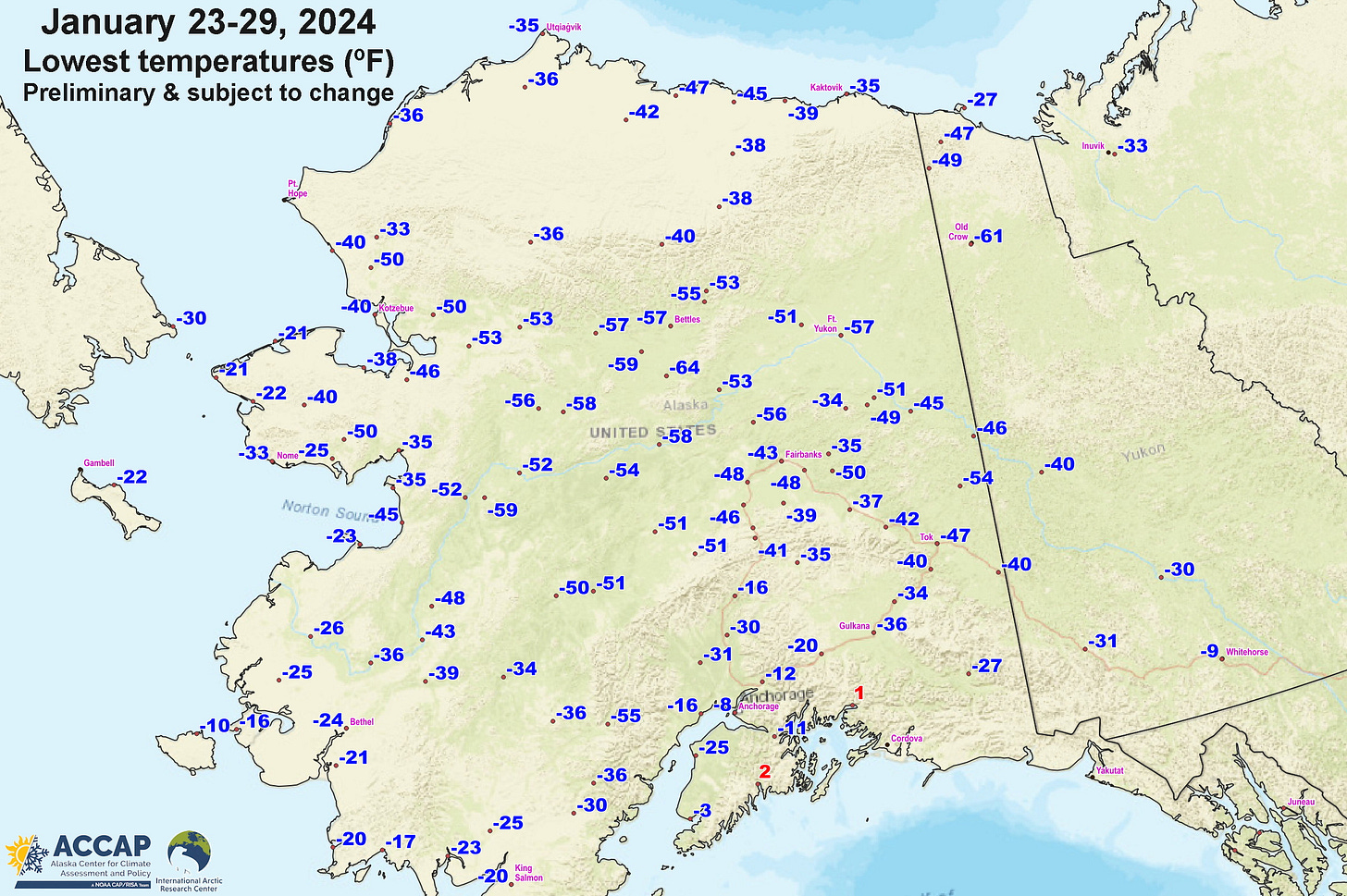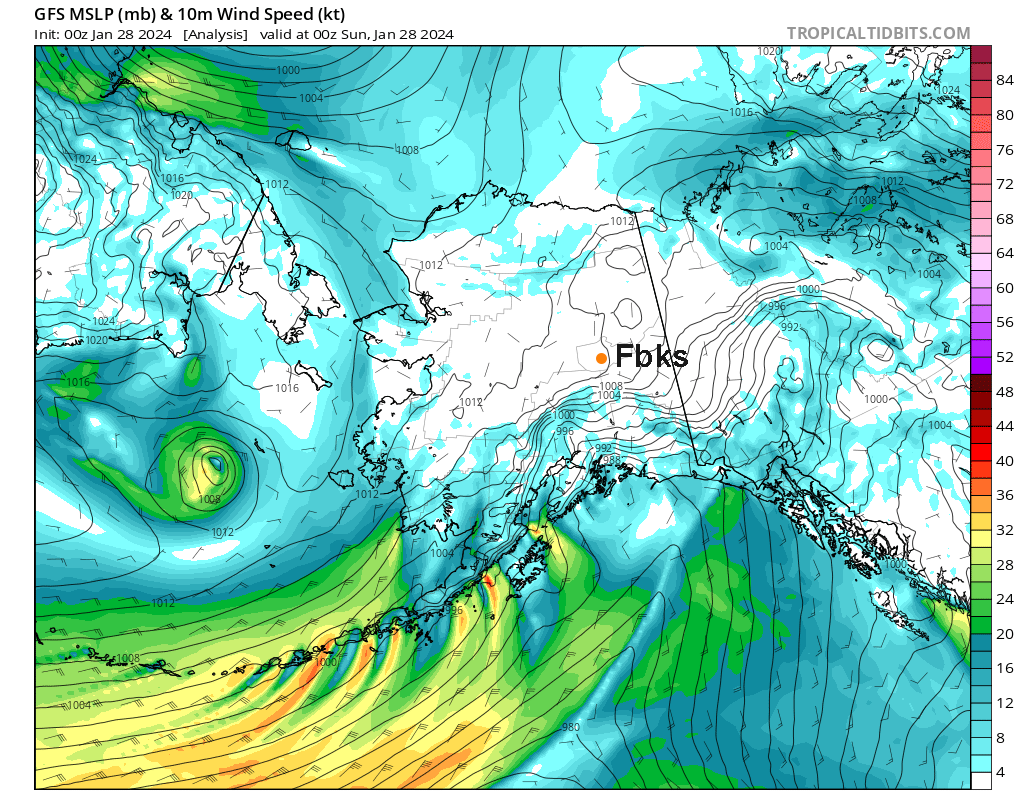An extremely cold airmass settle in over mainland Alaska the fourth week of January, bring the coldest weather in several years to much of the central and eastern Interior and Northwest Arctic. Temperatures on the North Slope and most of Southcental Alaska during the week were not exceptionally low for the season.
Lowest temperatures across mainland Alaska
Figure 1 [updated Jan 31] shows the lowest temperature during the week of January 23-29. In general, the lowest temperatures occur January 23-24 in the southeast Interior, January 26-27 central and northeast Interior and January 28-29 in the western Interior and Northwest Arctic. As low as these temperatures are, with widespread 50s below, so far as I can find not a single daily record low temperature was set1, reflecting the fact that deep cold has occurred in late January many times in the past: 1933, 1947, 1971 and 1989, 1993, and especially in western Alaska, 1999.

Lack of a temperature inversion
Temperature inversions, where the lowest temperatures occur at the lowest elevations and increase very rapidly in the few hundred feet of the atmosphere, are a normal part of the Interior Alaska climate. It’s not at all uncommon in the winter in the Fairbanks area for temperatures in hillside neighborhoods to be 20° to 30°F higher than in low lying areas. This atmospheric configuration is called an “inversion” because it’s in contrast to the “standard” state of the atmosphere, where temperatures decrease with height. But this expected feature was not part of this cold snap.
In the Fairbanks area, valley temperatures bottomed out in the -40s to lower -50s (F) January 26-27, the lowest temperatures in most areas since January 2017, or in some places February 2015. But at hillside elevations, say up to 1500 feet above the valley floor, temperatures fell to near or a bit below -40F. Based on the NWS Fairbanks Airport upper air soundings2 and the Keystone Ridge climate station, 14 miles northwest of Fairbanks Airport and 1200 feet above the valley floor, this was the coldest weather at elevation since February 1999, though January 2000 and January 2006 were close.

Figure 2 shows the temperature trace from the 3pm January 27 sounding. Notice that below the elevation of Ester Dome (about 2300 ft MSL), temperatures hardly varied at all and were within about 1 degree of -37F (-38C) and the lowest temperature in the lower atmosphere was not at the surface but about 700 feet above the valley floor, which is very unusual for January in the Interior except when it’s snowing steadily.
Why wasn’t there an inversion?
The lack of any significant temperature inversion was the result of very cold low pressure aloft. Figure 3 shows the 500 hPa height analysis as of 3pm AKST January 27. Think of this as the mid-atmospheric pressure pattern. The unusually strong low aloft (indicated by the color field) is an indicator that cold air is found throughout the lower and mid-atmospheric and the counterclockwise circulation around the low inhibits near surface formation of strong inversions.

One reflection of this low pressure aloft is seen in the sea level pressure pattern. Figure 4 shows the analyzed sea level pressure for 3pm AKST January 27. While there are some weak high pressure centers present across the Interior, these are close to “normal” sea level pressure and very different from the stereotypical “big high pressure brings big cold”, which might be a reasonable generalization at mid-latitudes but less so in the Arctic.

No records set at climate sites with more then 30 years of observations.
NWS Alaska Region no longer (since the late 2010s) takes upper air soundings when the surface temperature is below -40F, so the observations during this cold snap systematically under-samples the coldest air.




What do you think about the -64 °F recorded at the Kanuti Lake SCAN station on the 28th?
Is it reliable?
I see you didn’t find any new daily low records. Is the length of the extreme cold a different kind of record? It seems like it has been below -30 F every time I check on Fairbanks for more than a week.